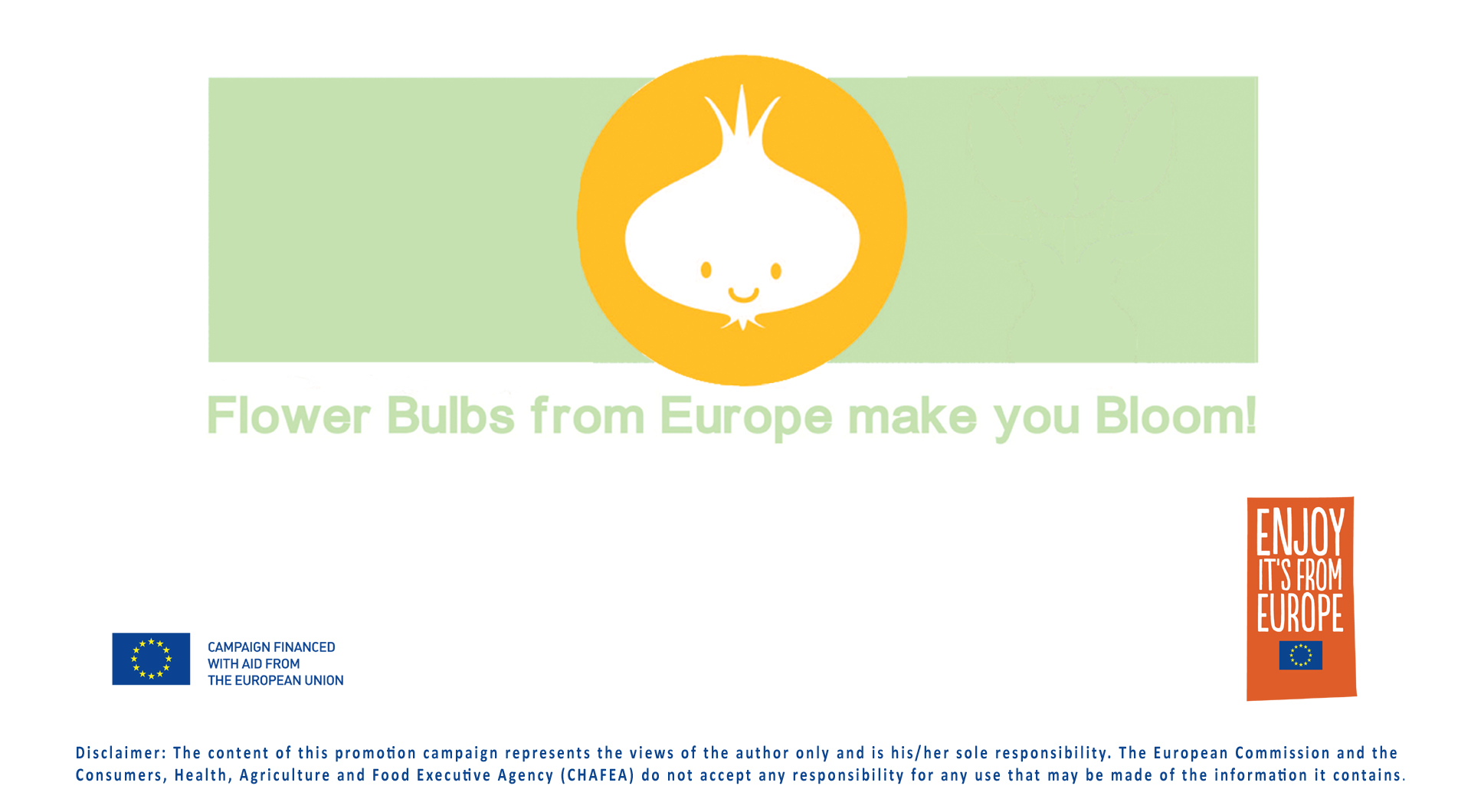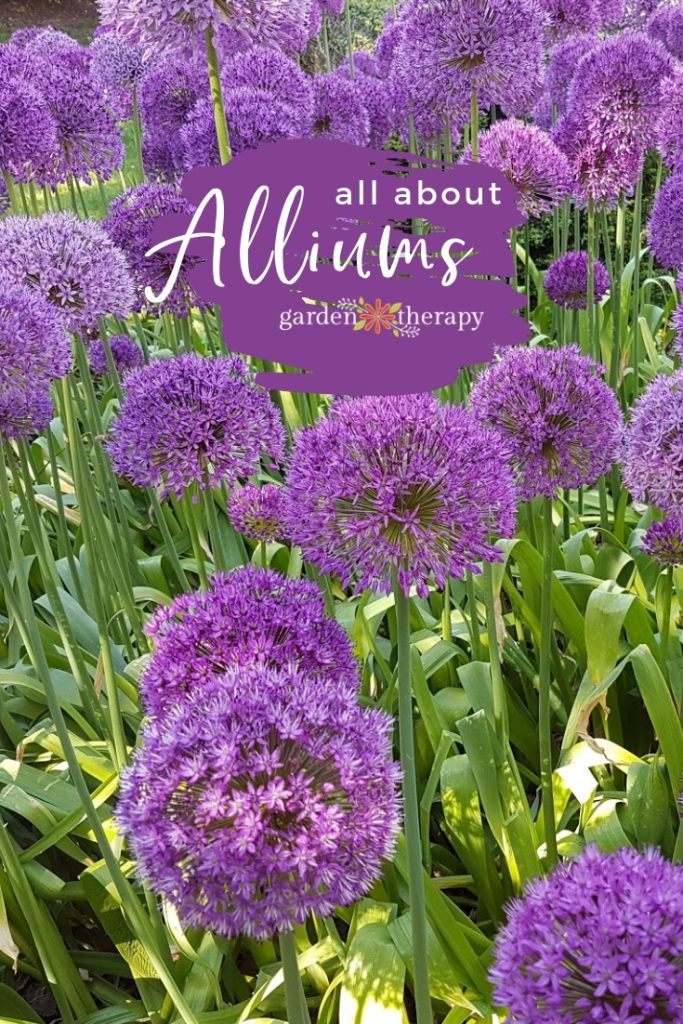Alliums are wonderful, unique-looking plants that come in a ton of different varieties. Their vibrant round purple flower heads stand out in the garden, and their seed heads make a stunning display. Plant them as bulbs this fall, and enjoy them next spring!
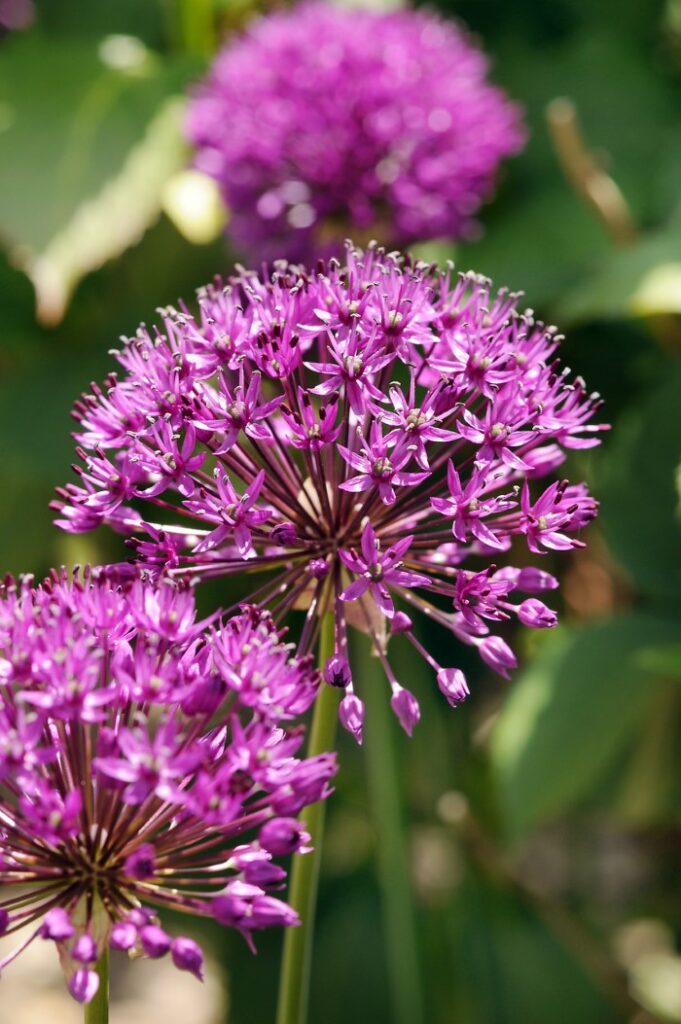
Alliums are everywhere in the garden. Some are a tasty addition to your favourite recipe (garlic, onions), some decorate the garden (ornamental alliums), and some are just plain weird (Egyptian walking onions). No matter how you use them, alliums are the perfect plant to pretty up your garden.
Alliums are members of the onion family. Garlic, chives, and onions are all harvested for their tasty and fragrant leaves and bulbs, but many gardeners also grow them because of their attractive flower heads.
Chives are often grown throughout the garden because of their purple pompom flowers that look decorative in the garden bed. Even better, onions and garlic are unappealing to garden pests like rodents, deer, and many insects. These easy-care plants don’t have a lot of natural pests, making them even more attractive to gardeners.
There’s a lot to know about alliums, so let’s dive into it!
Sponsored content: thank you to flowerbulbs.com for providing some of the lovely photos for this post! Flowerbulbs.com is an extremely helpful resource for learning about new flower bulbs and helps to support European bulb growers.
Growing Ornamental Alliums
There are other members of the allium family that don’t have the flavour but do have decorative bursts of flowers above a thin stock. Ornamental onions are prized in the garden for their interesting round purple flower heads, their attractiveness to bees and other pollinators, and, especially, for their dried seed heads.
Check the cultivars sold in your area; there are some for Zones 3 to 9. Allium plants aren’t picky about soil but they do love the sun!
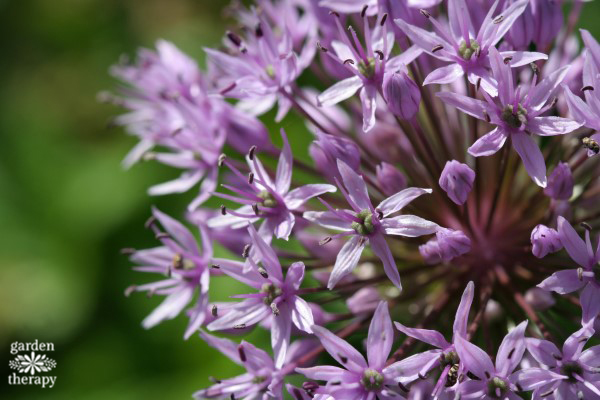

Alliums range in colour from shades of blue, purple, white, and yellow. The flower heads are usually round but can be drumstick-shaped perfect-globe round, or even a nodding crown.
Typically, the flower heads themselves won’t smell much like onion, but the foliage might. Even then, you have to crush it to get that fragrant smell. You may notice it when working alongside your allium flowers when disturbing the leaves.
The size of the blooms is also what makes them quite special. They can range from one foot tall to up to six feet tall. Some of the shorties aren’t necessarily teeny tiny flowers, either.
One of my very favourite ones is A. schubertii, which grows only about one to three feet tall and is mostly a huge 18” diameter explosion of flowers. The dried seed head makes for an amazing sculpture to use in your home decor. You can expect to see your allium flower blooms in late spring or early summer.
Planting Allium Flowers
Alliums are usually planted from bulbs. They are planted in early autumn, normally quite deep in the ground, from two to four inches.
It’s best to cluster bulbs together, with groupings of 12 to 25 small or 3-6 large looking the most attractive in the garden. You don’t need to worry about any kind of prep to the bulbs before planting, such as soaking. Once planted, give them a thorough watering after they’re in the ground.
Of course, you can always plant a set of three into containers or in between other plantings. They look most impressive grouped together like a wave of fireworks celebrating above the garden.


The foliage of allium plants isn’t that impressive and when the blooms die back it can look quite messy. They do best when planted in between a bunch of low-growing perennials with dense and interesting foliage to hide and distract from this.
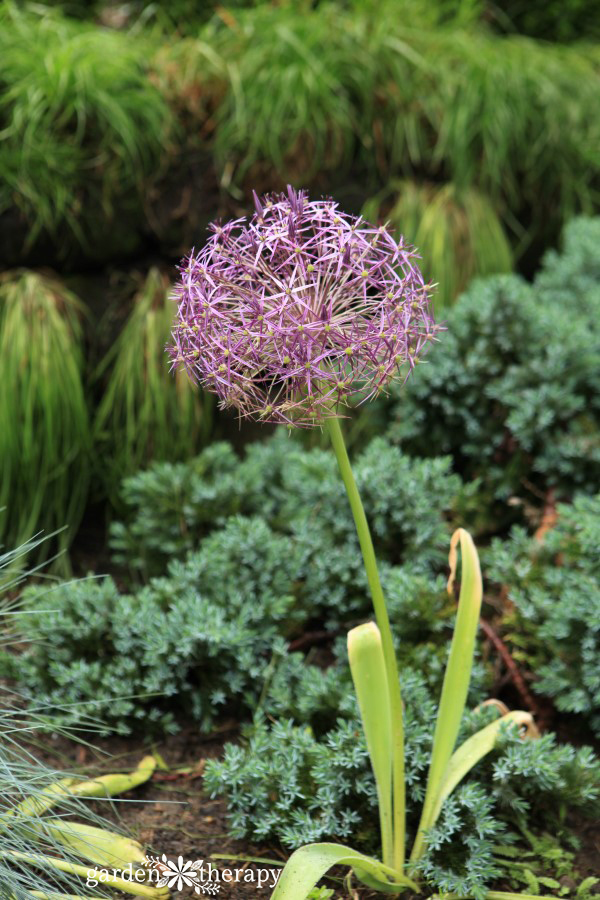

Allium Plant Seeds
Allium plants produce seeds that can be saved and sown in the garden; however, it will take several years for the plant to flower. By planting bulbs in the fall, you’ll have flowers the very next summer.
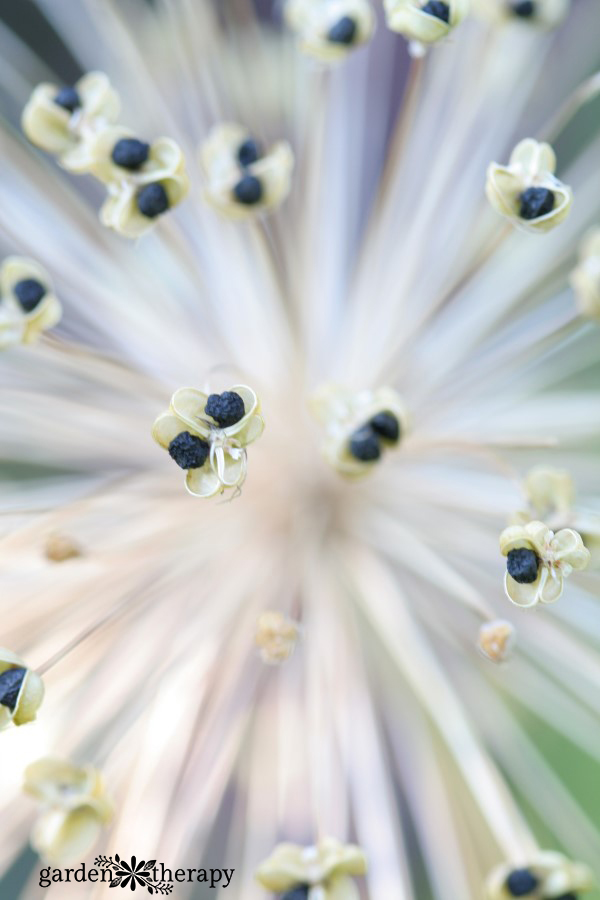

Some alliums produce bulbs on their heads after the flowers have faded. The Egyptian walking onion (A. × proliferum) is a great example of this. After the flower is finished they form small bulbs (called aerial bulbils) that get quite heavy on the top of the thin stock.
The Egyptian walking onion then flops over and plants itself on the ground beside the mother plant, essentially walking around the garden. These bulbs can also be harvested and eaten.
Treat the grouping of bulbs like a perennial clump and divide them when the clump becomes overcrowded. In my experience, allium plants only flower for a few years, so I do end up buying a few new bulbs every year or two to replenish the planting.
Harvesting Seed Heads
After your alliums have finished flowering, you can deadhead them if that’s what you prefer. Wait until the allium flower heads have lost all colour and have turned a yellow to brown. Simply snip off the whole stalk right to the ground and leave them as is. The bulb will remain dormant for the rest of the year and rest up until next spring.
But, if you’re like me, you can also leave them as is after they have finished flowering! The seed heads themselves are gorgeous and add a different kind of texture to the garden.


Give it a try, and leave the decorative seed heads in the garden. They lose the purple colour but they have a sculpture, globe-like appeal.
They can be harvested to use for crafts and flower arrangements as well. If you’d like to use them for arrangements, try to keep the stems as long as possible. The seed heads will last well in any arrangement without any need for sealer.
The stem becomes woody and will be beautiful for years if kept indoors. Left unprotected outdoors, they will break down over the season. However, you can paint them to add colour and protection if you want to leave them outdoors.
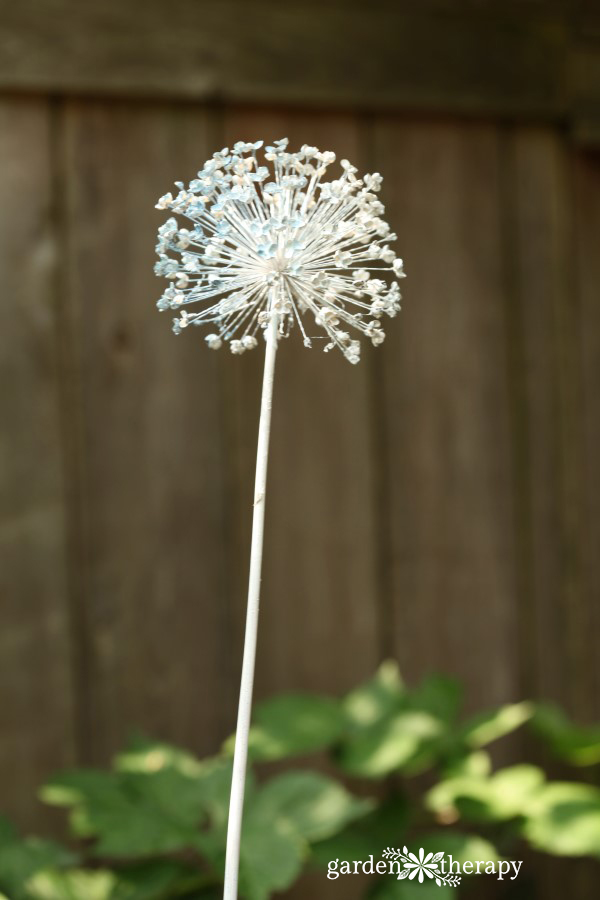

7 Types of Ornamental Alliums to Grow
Here are a few of my favourite allium varieties to grow in the garden. Whether you want to eat them or just enjoy their decorative look, there are sure to be a few varieties that appeal to you.
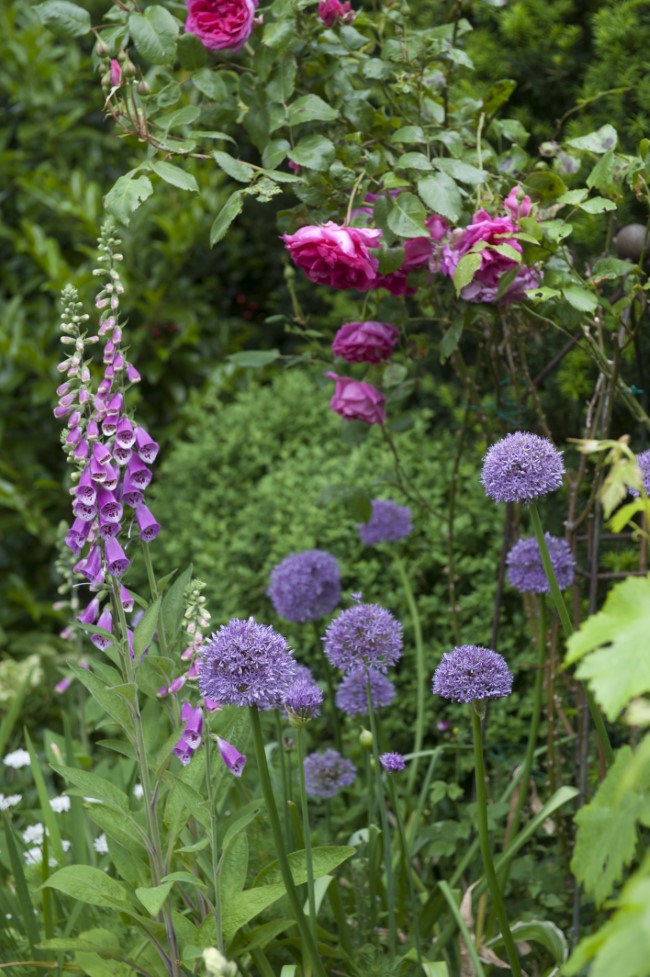

Drumstick
Drumstick allium (A. sphaerocephalon) has an oblong, burgundy flower that reaches two feet high but is only one to two inches in diameter. They change from green to wine colour, looking decorative in the garden at all stages. Plant at least 25 of these small bulbs among perennial plants such as Hosta, Alchemilla or among ornamental grasses.
- Flowering period: May – June
- Average plant height: 24 inches
- Planting depth to base of bulb: 4 inches
- Spacing between bulbs: 4 inches
- Light requirements: full sun
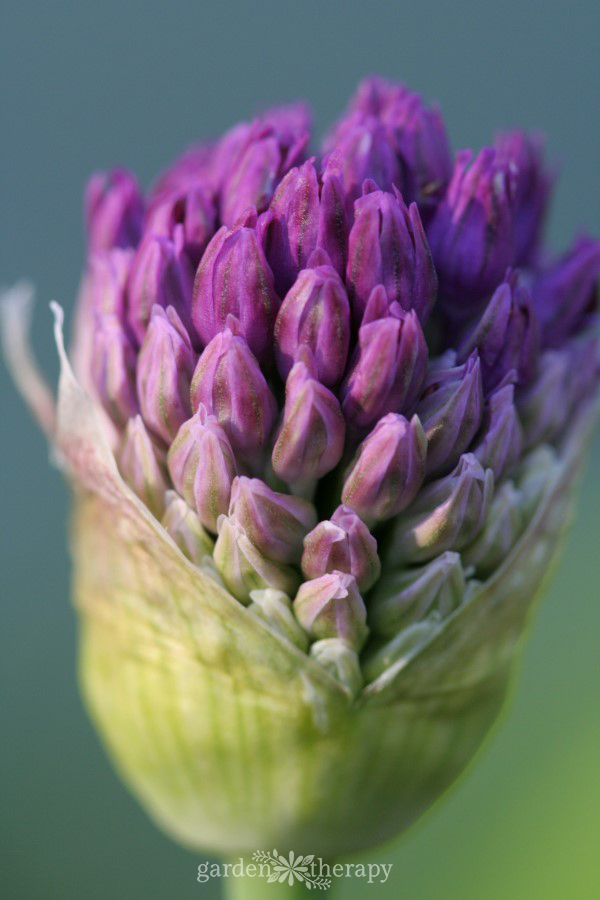

A. giganteum “Globemaster”
A. giganteum, or ‘Globemaster,’ has huge 8” diameter round heads containing over 100 flowers on 4-foot tall stems. These are truly impressive onions! The foliage withers quickly as the plant blooms, so they are best towering over the back of a sunny border.
- Flowering period: May – June
- Average plant height: 68 inches
- Planting depth to base of bulb: 8 inches
- Spacing between bulbs: 12 inches
- Light requirements: full sun
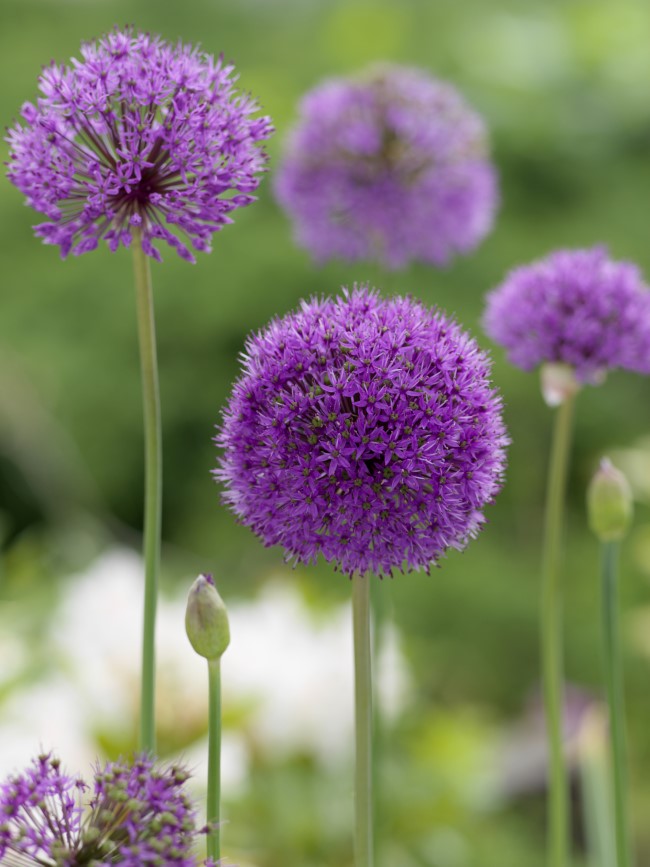

A. shubertii
A. shubertii, also known as Tumbleweed Onion, have short stalks but a flower head that looks like a fireworks display and produces a stunning seed head sculpture.
- Flowering period: May – June
- Average plant height: 16-20 inches
- Planting depth to base of bulb: 4 inches
- Spacing between bulbs: 3 inches
- Light requirements: full sun to partial shade
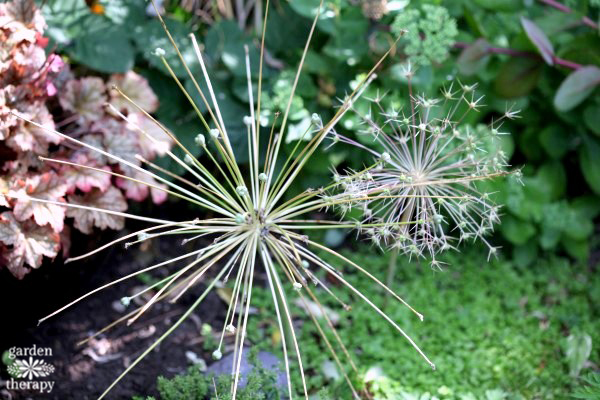

A. christophii
A profusely flowering allium species, its gray-green leaves remain attractive for a fairly long period. It is absolutely perfect for naturalizing in lightly shaded locations and in soil that remains sufficiently moist.
- Flowering period: May – June
- Average plant height: 12 inches
- Planting depth to base of bulb: 4 inches
- Spacing between bulbs: 3 inches
- Light requirements: full sun to partial shade
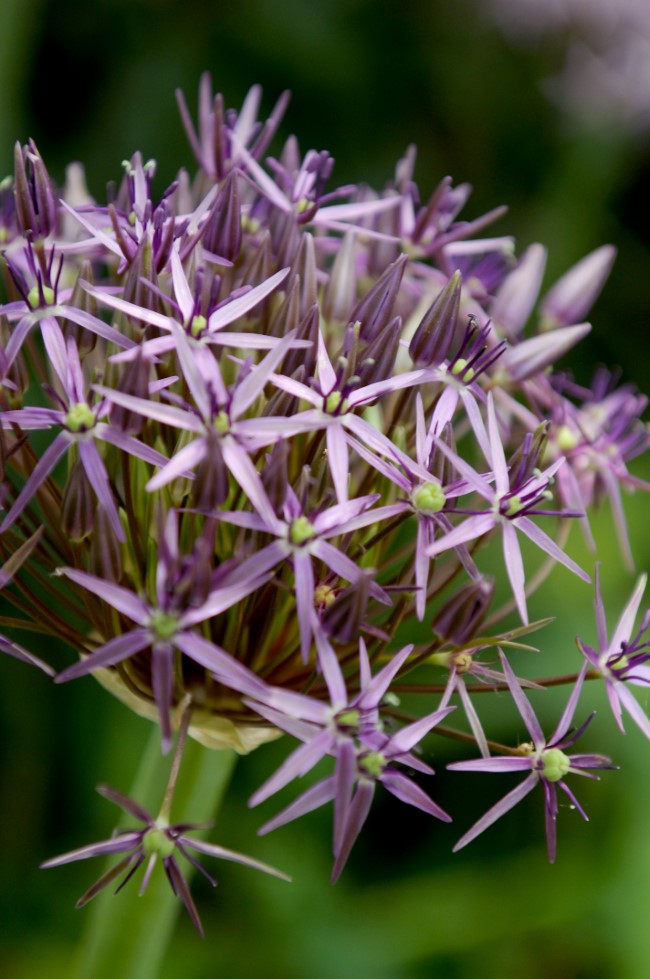

A. ‘hair’
Allium ‘hair’ is a weird and wonderful plant with green tentacle-like flowers. Some people call them aliens or Dr. Seuss plants, but they remind me of the Muppets!
- Flowering period: April – June
- Average plant height: 24 inches
- Planting depth to base of bulb: 2 inches
- Spacing between bulbs: 2 inches
- Light requirements: full sun to partial shade
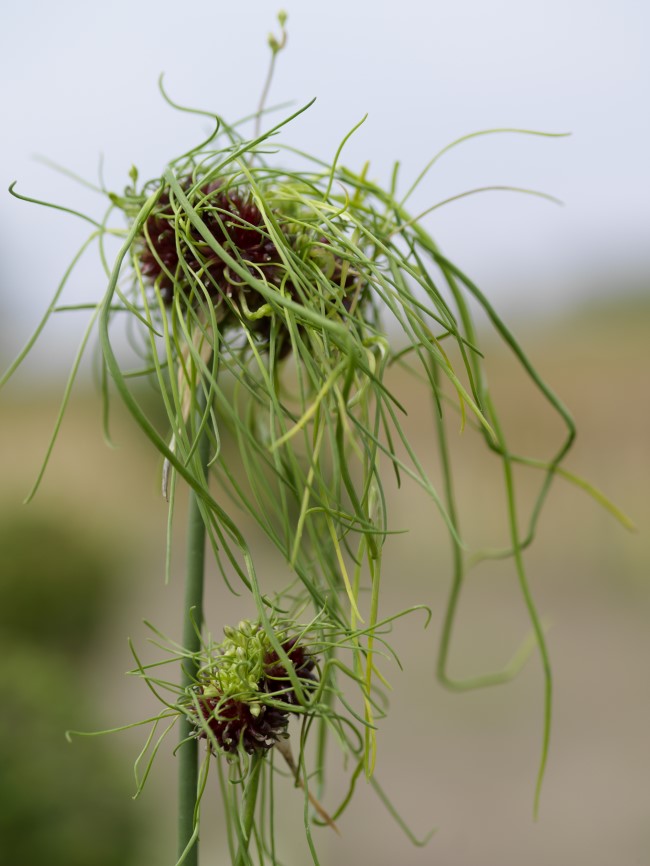

A. oreophilum
A. oreophilum is a delicate yet brilliantly coloured flower that naturalizes easily.
- Flowering period: May – June
- average plant height: 8 inches
- Planting depth to base of bulb: 4 inches
- Spacing between bulbs: 4 inches
- Type of bulb: true bulb
- Light requirements: full sun


A. karataviense
A. karataviense is the ‘Ivory Queen.’ Very striking with dense, purple-gray flower colour, and spotted leaves. Ivory Queen has a wonderful scent, and it is the best variety for container gardens.
- Flowering period: May – June
- Average plant height: 10 inches
- Planting depth to base of bulb: 6 inches
- Spacing between bulbs: 8 inches
- Type of bulb: true bulb
- Light requirements: full sun to partial shade
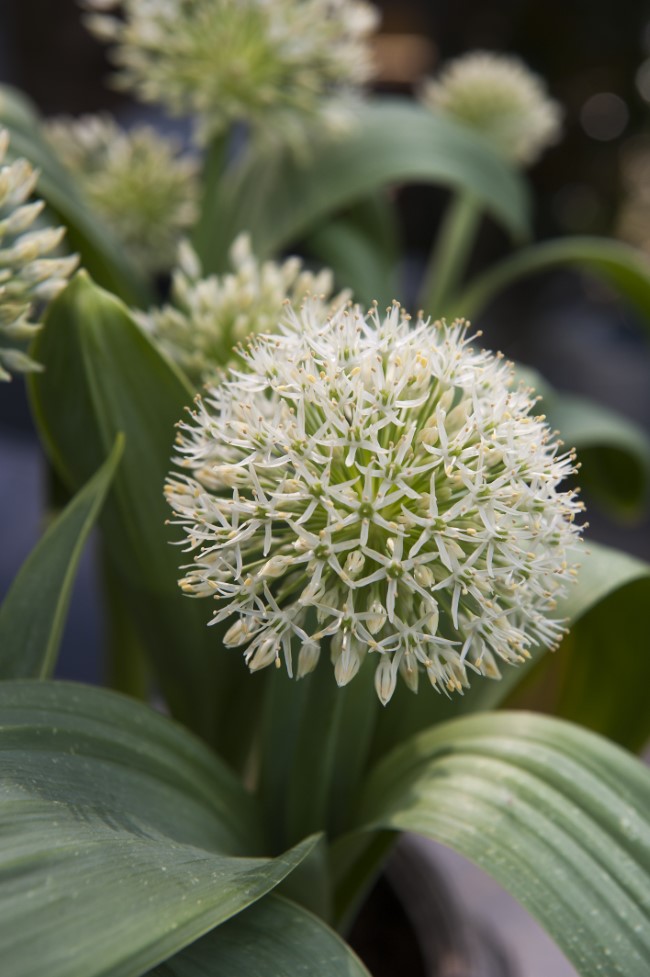

A Few Edible Beauties
Nodding onions (Allium cernuum) have delicate crowns of flowers that hang upside down or nod when in bloom.


Garden chives (Allium schoenoprasum). Yes, that’s right, I have chives on this list because they are ornamental, hardy, edible, and great natural pest control! Plant clumps of chives all over your garden and pests will be sent packing while the bees feast (and you can too).
Alliums FAQ
Both! Garlic and onions both belong to the Allium genus, which comprises more than 500 species, including other popular vegetables like shallots, chives, leeks, and scallions.
Many alliums will set seed and could spread, but it takes a few years for those plants to flower. Meanwhile, some varieties won’t spread at all. If you want alliums that spread, look for the word naturalizing when purchasing allium bulbs.
Alliums are a wonderful companion plant, often deterring pests from your other nearby vegetables when planted close by. However, they shouldn’t be planted next to most plants in the legume family, including beans and peas. Also, keep them away from asparagus and sage.
More Flowering Bulbs to Plant in Fall
